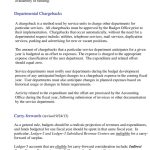Maximize Your Retirement Plan With 1099R: Secure Your Future Today!
Retirement Plan 1099R: Ensuring a Secure Future
Introduction
Dear Readers,
1 Picture Gallery: Maximize Your Retirement Plan With 1099R: Secure Your Future Today!

Welcome to our comprehensive guide on retirement plan 1099R. In today’s uncertain economic times, planning for retirement has become more crucial than ever. With the retirement plan 1099R, individuals can ensure a secure and comfortable future for themselves and their loved ones. In this article, we will delve into the details of this retirement plan, covering what it entails, who can benefit from it, when and where it can be utilized, why it is important, and how it works. By the end of this guide, you will have a clear understanding of the advantages and disadvantages of retirement plan 1099R, enabling you to make informed decisions for your retirement journey.
Table: Overview of Retirement Plan 1099R
Retirement Plan 1099R
Description

Image Source: investopedia.com
What is Retirement Plan 1099R?
Explanation of the retirement plan and its purpose.
Who Can Benefit from Retirement Plan 1099R?
Eligibility criteria for individuals to participate in the plan.
When Can Retirement Plan 1099R be Utilized?
Age and time considerations for utilizing the plan.
Where Can Retirement Plan 1099R be Implemented?
Availability and options for implementing the plan.
Why is Retirement Plan 1099R Important?
Importance and benefits of having a retirement plan 1099R.
How Does Retirement Plan 1099R Work?
Explanation of the functioning and mechanics of the plan.
What is Retirement Plan 1099R?
🔑 Retirement plan 1099R is a tax document issued by financial institutions to report distributions from retirement accounts such as Individual Retirement Accounts (IRAs) and other qualified retirement plans. It outlines the amount of money withdrawn from the account and the applicable taxes. This document is essential for individuals during tax filing season as it provides information needed to accurately report retirement distributions.
Explanation:
A retirement plan 1099R serves as a record of the money withdrawn from retirement accounts during a given tax year. It helps individuals track their retirement income and ensures compliance with tax regulations. The document contains details such as the distribution amount, taxes withheld, and any applicable penalties. By receiving a retirement plan 1099R, individuals gain a comprehensive overview of their retirement income and can make informed decisions about their finances.
Who Can Benefit from Retirement Plan 1099R?
🔑 Retirement plan 1099R is available to individuals who have contributed to retirement accounts, such as IRAs and qualified retirement plans, and are now eligible to receive distributions. It encompasses various groups, including:
Eligibility Criteria:
1. Individuals who have reached the minimum age for retirement account distributions, typically 59½ years old.
2. Beneficiaries who inherit retirement accounts and need to report the distributions.
3. Individuals who experience financial hardships and qualify for early withdrawals with applicable penalties.
4. People who have become disabled and require distributions for living expenses.
5. Individuals who have terminated their employment and need to roll over their retirement funds.
6. Participants in employer-sponsored retirement plans, such as 401(k) or 403(b), upon retirement or separation from service.
When Can Retirement Plan 1099R be Utilized?
🔑 Retirement plan 1099R can be utilized when individuals meet specific age and time requirements. The key factors determining when this plan can be used are:
Age and Time Considerations:
1. Minimum Age: To access retirement funds without incurring penalties, individuals must typically reach the age of 59½.
2. Required Minimum Distributions (RMD): Once individuals reach the age of 72, they are required to take annual distributions from their retirement accounts, resulting in the issuance of a 1099R form.
3. Early Withdrawals: In certain situations, such as financial hardships or disability, individuals may be eligible for early withdrawals with applicable penalties.
4. Termination of Employment: When individuals leave their employment, they may choose to roll over their retirement funds, triggering the issuance of a retirement plan 1099R.
5. Beneficiary Distributions: In the event of the account holder’s death, beneficiaries receive distributions from the retirement account, subject to tax reporting.
Where Can Retirement Plan 1099R be Implemented?
🔑 Retirement plan 1099R can be implemented through various financial institutions and retirement account providers. These include:
Availability and Options:
1. Banks and Credit Unions: Traditional banking institutions offer retirement account services, allowing individuals to establish and manage their retirement plans.
2. Investment Firms: Companies specializing in investment management and brokerage services provide retirement account options, offering a wide range of investment choices.
3. Insurance Companies: Certain insurance providers offer retirement products, allowing individuals to combine insurance coverage with retirement planning.
4. Employer-Sponsored Plans: Many companies provide retirement plans, such as 401(k) or 403(b), allowing employees to contribute and receive distributions upon retirement or separation from service.
5. Online Platforms: Technological advancements have led to the emergence of online platforms that enable individuals to set up and manage retirement accounts digitally.
Why is Retirement Plan 1099R Important?
🔑 Retirement plan 1099R is of utmost importance due to the following reasons:
Importance and Benefits:
1. Tax Reporting: Retirement plan 1099R ensures accurate reporting of retirement distributions, allowing individuals to fulfill their tax obligations.
2. Financial Planning: By receiving a retirement plan 1099R, individuals gain insights into their retirement income and can effectively plan for their financial future.
3. Penalties and Compliance: Failure to report retirement distributions accurately can result in penalties from the Internal Revenue Service (IRS). The 1099R form helps individuals remain compliant with tax regulations.
4. Documentation: The retirement plan 1099R serves as official documentation of retirement distributions, providing individuals with a record of their financial activities.
5. Retirement Income Analysis: Having a retirement plan 1099R allows individuals to assess their retirement income and make adjustments if necessary to ensure a comfortable retirement.
How Does Retirement Plan 1099R Work?
🔑 Retirement plan 1099R operates based on the following mechanisms:
Explanation:
1. Distribution Triggers: Individuals become eligible for retirement plan 1099R when they meet specific age or time requirements, such as reaching the age of 59½ or being subject to required minimum distributions.
2. Financial Institution Issuance: The financial institution or retirement account provider issues the retirement plan 1099R to the account holder, detailing the distributions made during the tax year.
3. Tax Reporting: Individuals must include the information from the retirement plan 1099R when filing their income tax returns, ensuring accurate reporting of retirement distributions.
4. Tax Withholding: The retirement plan 1099R indicates any taxes withheld from the distributions, allowing individuals to calculate their tax liability or potential refund.
5. Penalties and Exceptions: The 1099R form highlights any penalties or exceptions associated with the distributions, ensuring individuals are aware of potential consequences.
6. Financial Planning: By reviewing the retirement plan 1099R, individuals can assess their retirement income, identify areas for improvement, and make informed decisions regarding their financial future.
Advantages and Disadvantages of Retirement Plan 1099R
Advantages:
1. Tax Flexibility: Retirement plan 1099R allows individuals to control their tax liability by managing the timing and type of retirement distributions.
2. Retirement Income Options: Individuals can choose from various distribution options, such as lump-sum payments or annuity payments, providing flexibility to meet their financial needs.
3. Penalty Exemptions: The retirement plan 1099R outlines exceptions to penalties, such as financial hardships or disability, enabling individuals to access funds when needed.
4. Rollover Opportunities: Individuals can roll over retirement funds into other qualified accounts, allowing for continued tax-deferred growth and potential consolidation of assets.
5. Estate Planning: By carefully considering the retirement plan 1099R, individuals can incorporate it into their estate planning strategies, ensuring a smooth transfer of wealth to beneficiaries.
Disadvantages:
1. Tax Obligations: Retirement plan 1099R requires individuals to fulfill their tax obligations, including reporting retirement distributions and potential taxes owed.
2. Early Withdrawal Penalties: Accessing retirement funds before reaching the age of 59½ may result in early withdrawal penalties, reducing the overall retirement savings.
3. Potential Taxation: Retirement plan 1099R distributions are generally subject to income tax, potentially affecting an individual’s tax bracket and overall tax liability.
4. Limited Contribution Amounts: Contribution limits for retirement plans may restrict individuals from saving as much as they desire, limiting the potential growth of their retirement savings.
5. Market Volatility: The performance of retirement investments is subject to market fluctuations, potentially impacting the overall value of retirement accounts.
Frequently Asked Questions (FAQs)
1. Can I withdraw funds from my retirement plan without incurring penalties?
Yes, certain exceptions, such as financial hardships, disability, or specific retirement ages, allow for penalty-free withdrawals. However, taxes may still apply.
2. How often should I review my retirement plan 1099R?
It is recommended to review your retirement plan 1099R annually to ensure accurate reporting of retirement distributions and assess your overall retirement income.
3. Can I roll over my retirement plan 1099R distributions into another retirement account?
Yes, individuals can roll over their retirement plan 1099R distributions into another qualified retirement account, ensuring continued tax-deferred growth and potential consolidation of assets.
4. What is the required minimum distribution (RMD) and when does it apply?
The required minimum distribution (RMD) is the minimum amount that individuals must withdraw from their retirement accounts once they reach the age of 72, as mandated by the IRS.
5. Are there any penalties for not reporting retirement plan 1099R distributions?
Yes, failure to report retirement plan 1099R distributions accurately can result in penalties from the IRS. It is essential to comply with tax regulations to avoid potential consequences.
Conclusion
In conclusion, retirement plan 1099R plays a vital role in securing a comfortable future for individuals. By understanding the what, who, when, where, why, and how of this retirement plan, individuals can make informed decisions about their financial future. It is crucial to utilize retirement plan 1099R effectively, considering its advantages and disadvantages, to ensure tax compliance and maximize retirement income. Remember to review your retirement plan 1099R annually and seek professional advice when needed. Start planning today for a prosperous tomorrow!
Final Remarks
Dear Readers,
Retirement planning is a crucial aspect of everyone’s financial journey. While the information provided in this article aims to be accurate and informative, it is essential to consult with financial professionals or tax advisors for personalized advice. Remember that retirement plan 1099R is subject to tax regulations that may vary depending on individual circumstances and jurisdiction. We wish you the best of luck in your retirement planning endeavors.
This post topic: Budgeting Strategies



